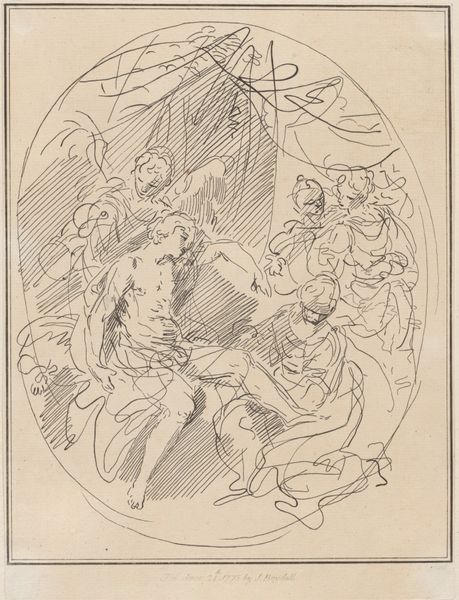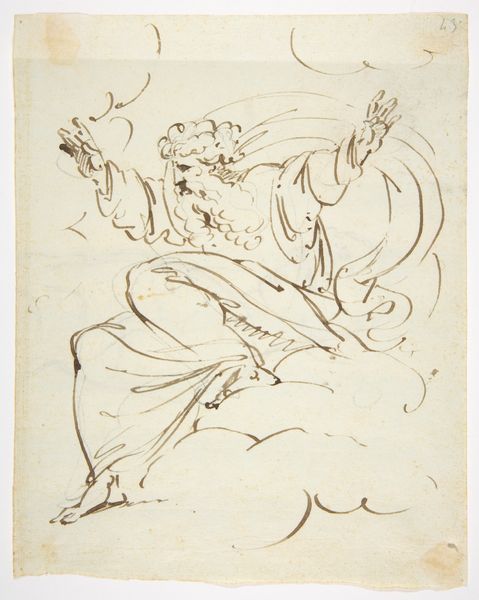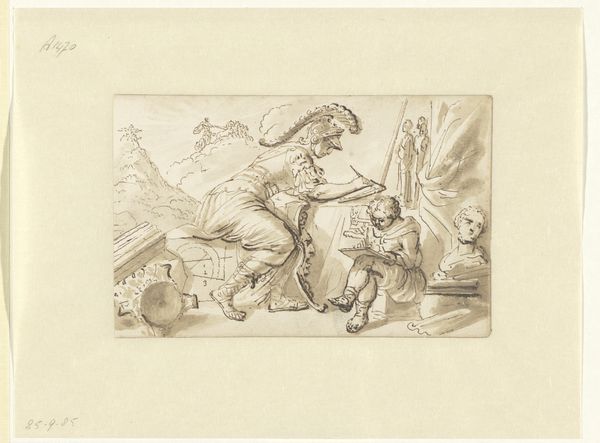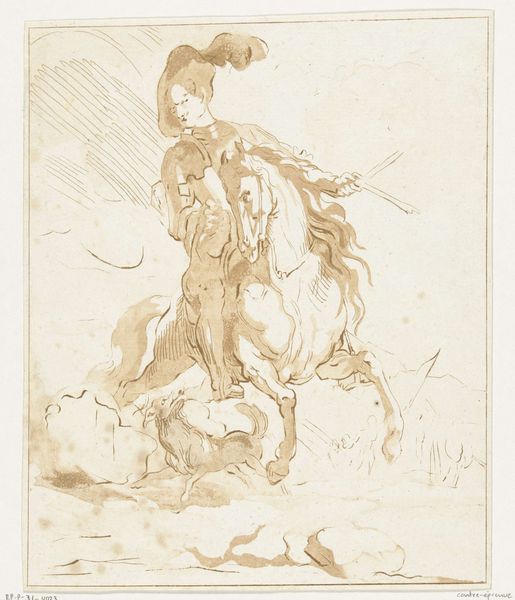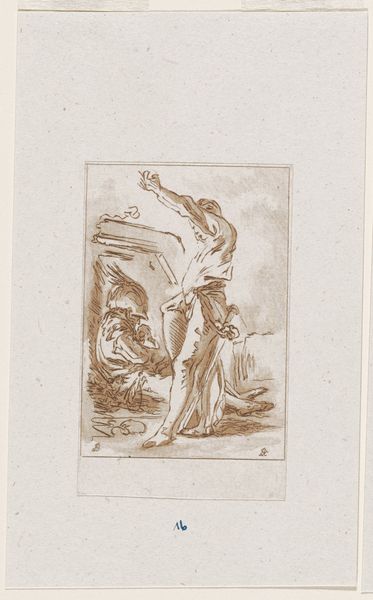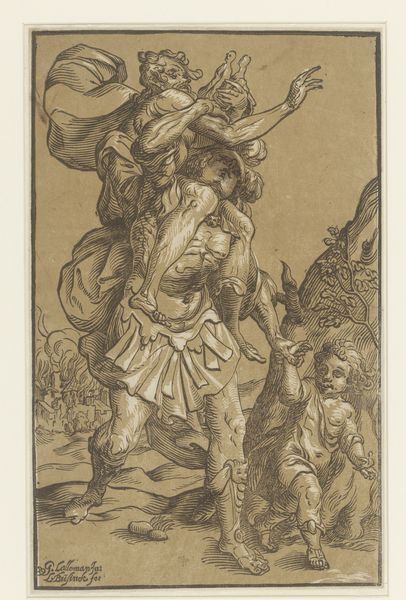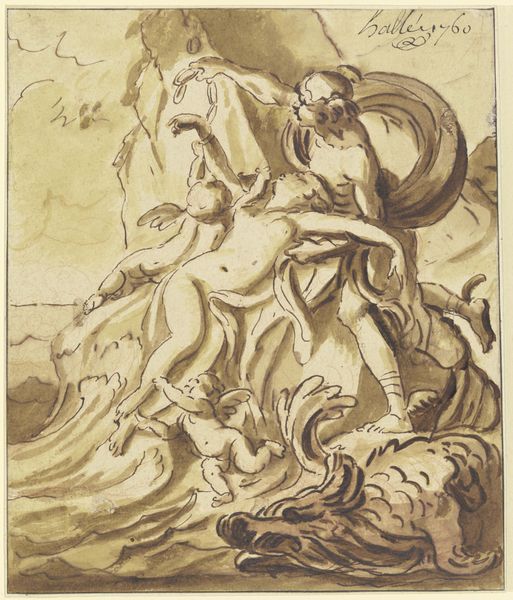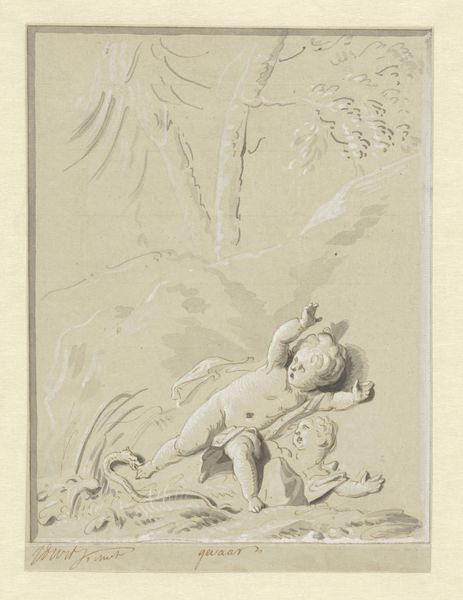
Strijder te paard rijdt over een op grond liggende man 1744 - 1781
0:00
0:00
jeanbaptistleprince
Rijksmuseum
Dimensions: height 171 mm, width 132 mm
Copyright: Rijks Museum: Open Domain
Curator: Wow, what a powerful scene! I'm immediately struck by the tension and violence. The horse rearing above a figure on the ground... it's almost theatrical. Editor: Indeed. We are looking at a drawing titled "Strijder te paard rijdt over een op grond liggende man"—"Horseman Riding over a Man on the Ground"—created between 1744 and 1781 by Jean Baptist Leprince. Executed in ink on paper, it’s quite the forceful history painting, even within the intimate scale of a drawing. Curator: History, yes, but it feels deeply personal too. Leprince captures that brutal energy so vividly. Look at the frantic lines describing the horse’s movement and the almost sculptural rendering of the fallen man. Do you feel it’s romanticizing violence at all? Editor: Well, Leprince lived during a time of considerable political upheaval, not least given France's extensive involvement in wars across Europe, so romanticization or documentation can often blur. We have to be aware that representations like these were often used as political tools. Whose history is being centered? Is the fallen man a victim of circumstance, or a villain receiving his due? This piece prompts important questions about power dynamics. Curator: That's insightful. It's strange, the more I look, the less triumphant the rider seems. There’s a wildness, maybe even desperation in the rider’s pose, the horse's eyes... as if they are both caught in a cycle they can't escape. Like war consumes everyone. Editor: Precisely. The dynamism he achieves with such limited materials—paper and ink—is exceptional and creates a strong sense of unease. Consider too the history of horses as tools of empire. By depicting this scene, Leprince perhaps encourages his viewers to question not just individual morality, but the systemic forces at play. Curator: This makes me think about the role of landscape, too. The setting is minimal, but that blank background intensifies the focus on the figures—trapping them in their conflict. Editor: Yes, the absence of a detailed background makes the drama stark. What appears initially as a straightforward scene of conquest becomes, upon closer examination, an intense interrogation of authority. Curator: Looking again through a contemporary lens makes it so complex, less about heroism and more about a brutal truth of conquest. Editor: Exactly, and acknowledging those truths allows us to engage more critically with the narratives these images perpetuate. It’s a small drawing, but it invites very big questions.
Comments
No comments
Be the first to comment and join the conversation on the ultimate creative platform.
